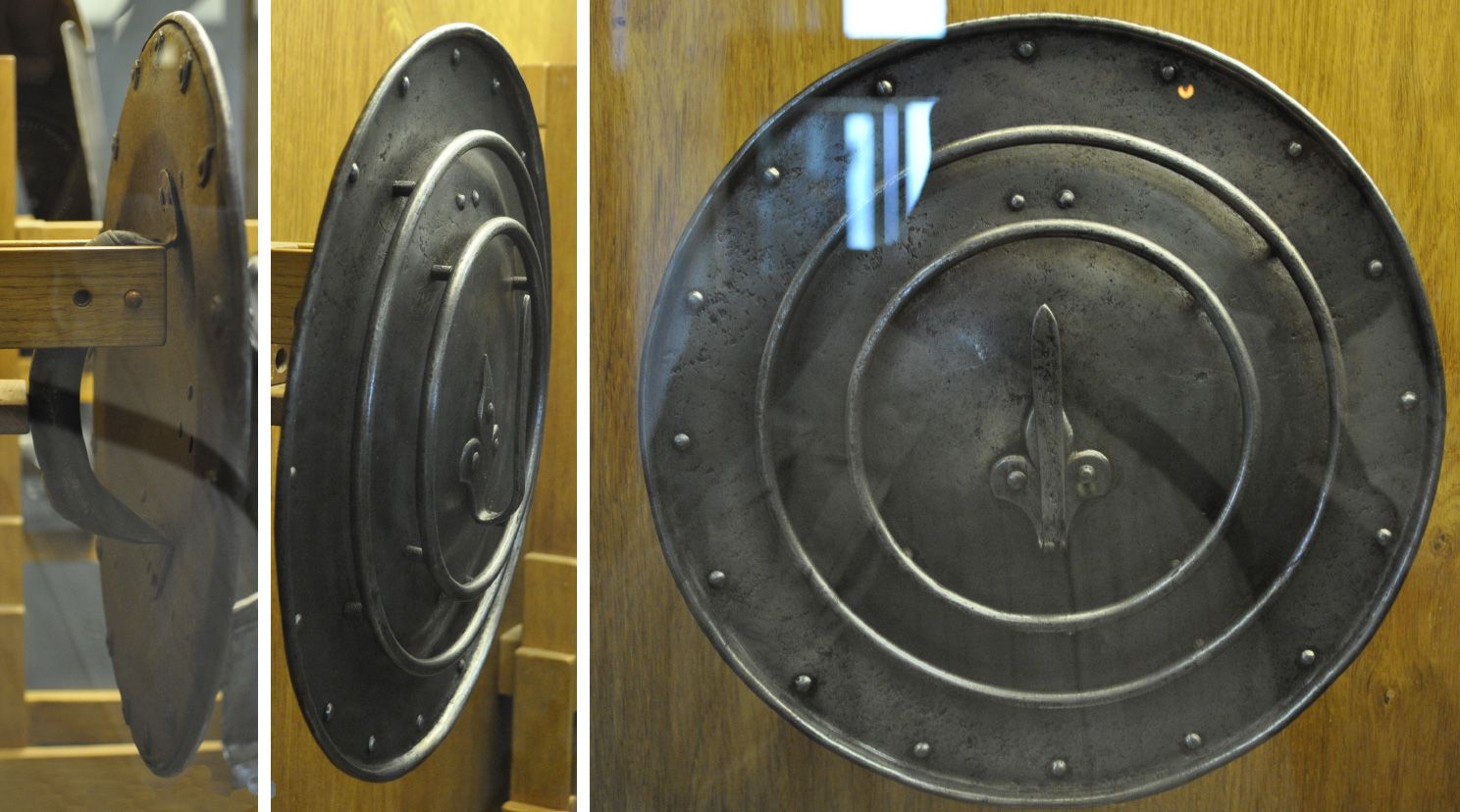
During the next month I will introduce a change in the Bolognese swordsmanship classes that I run. From simply doing sword alone we will introduce the buckler.
“Sword and buckler” has a very medieval sound to it, probably due to the general popularity of the I.33 manuscript, the earliest sword-treatise we know of that consists only of this discipline and dates back to the turn of the 14th century.
Bolognese spada e brocchiero is, however, quite different. Not to downplay I.33 in any way or its authors or today enthusiasts, but I don’t think there is any argument to its vagueness. It is extremely difficult to gain much certainty about how the actions explained are to be executed, and there is much argument about how it should be done. Too much to my liking, at least.
Going back to the Bolognese, we find the discipline described by Manciolino, Marozzo and to some extent the anonymous manuscript. All three describe the guard positions with the buckler held in the left hand. This is perhaps the most important factor tying all three together, as the description of guards is arguably one of the two most fundamental aspects of the Bolognese style, with the other being the different strikes that are framed by these positions.
Apart from the guards the anonymous does differ from the other two in that it is silent on the subject of assalti, the multi-step choreographies executed by two fencers: presumably the master executing the parries and the student the attacks.
The assalti described by Manciolino and Marozzo bear many similarities. To my mind, Manciolino has them better laid out and slightly more simplistic, while Marozzo includes some important details.
Regardless of the specifics of the written instructions it seems likely that spada e brocchiero was indeed the basic style first taught to the students of the Bolognese style, and there absolutely is no reason why we could not do the same today. The benefits of this will be that both arms get exercised and that iti s actually easier to fence with the buckler as the sword is then more free to perform what it is best suited for: offence.
I have set a number of goals myself and the students are to reach before we re-evaluate the emphasis. I want everybody to finally get an idea of what an assalto is, and I want everybody to get a clear understanding of how to defend effectively with the buckler and to understand what vulnerabilities the combination leaves — and of course to take advantage of those vulnerabilities on the opponent. I want us to fence with the combination with the level of speed, elegance and precision demonstrated by the sword alone so far, and more.
Learning one of the full assalti might be too much at this point (not the least because I am out of practice on them myself), but at least we’ll all get to intimately know an abbreviated form of one of the assalti that will include all the three stages: the entry, the fight and the retreat. I’m excited and looking forward to seeing how this will reflect on the students general movement and mechanics.
One additional benefit is, that during free fencing sessions that usually follow each class, the students will be allowed to pick the weapon combination they want to use. I might allow daggers after a while without specifically focusing on them, since I believe if one is skilled up to a point with the buckler and with the sword alone, figuring the dagger out shouldn’t be too hard. Of course, to begin with I’ll be pushing everybody to get used to using the buckler against a buckler before starting to mix things up.
For my students reading this, if you don’t yet have a buckler, fear not. I will make sure we have cheap “place-holder bucklers” available that will get everybody started. Later on you can upgrade to a proper steel buckler for steel sword use.
I’ll make this official on our club website as soon as I’m ready with the plans.
Looking back the two past years I think we’ve reached a pretty good point with the sword alone. We have a beginner’s course curriculum set up, there are no major problems in continuing the interpretation process and new insights into the application of the style emerge every class and training session.
While focusing on the buckler use during training from now on, I’ll simultaneously collect the information from the last two years and formulate it, creating a basic knowledge-base of our style either in written or video form (or a mix of both), and we are likely to pick up from there once the time is right.
I do hope this step will be enjoyable to everyone and bring even more excitement and enthusiasm into training. More on this later!